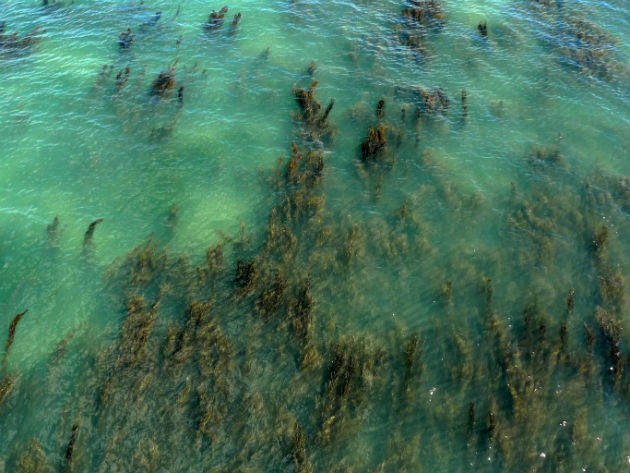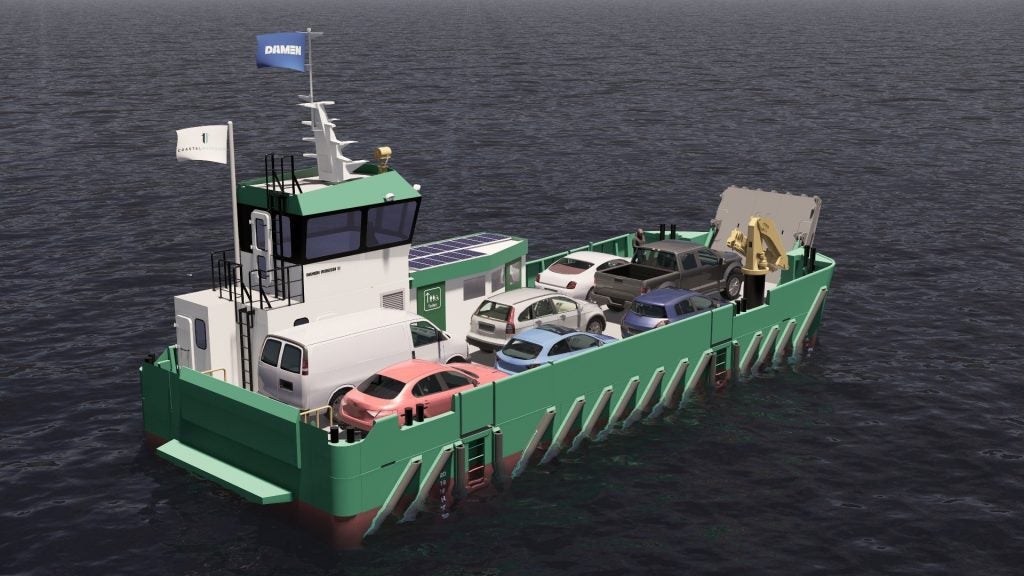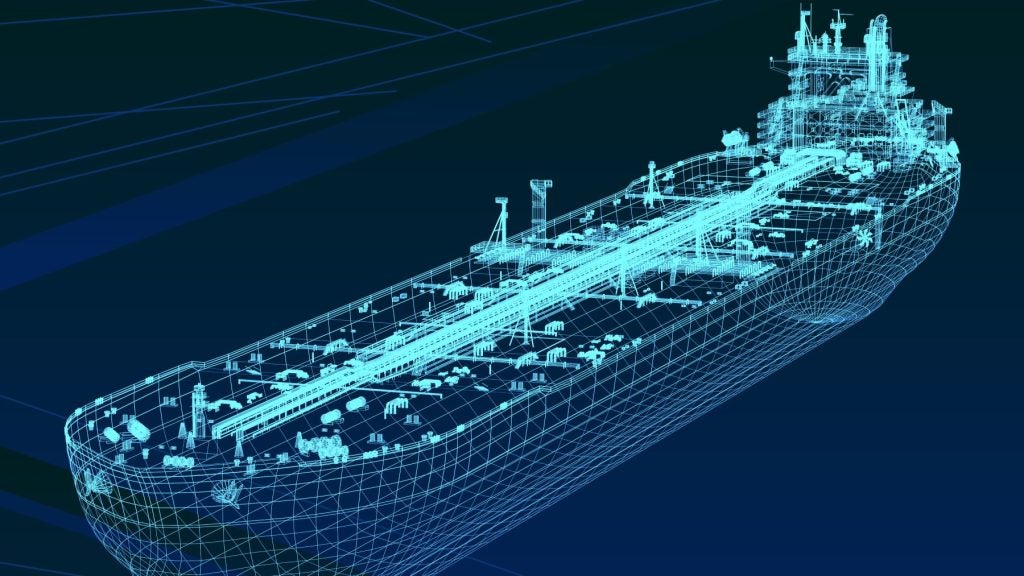

Most commonly associated in the West with seaside holidays and Chinese restaurants, seaweed is in fact present in everything from food to medicines, bioplastics, animal feed, fertilisers and biofuels.
Cultivating this humble algae on an industrial scale is now big business. Global seaweed production more than doubled between 2000 and 2014 to around 28 million tons annually, worth an estimated $6bn.
In Norway, which is home to 400 species, demand has begun to outstrip capacity, where much of the sowing and harvesting from cultivation farms is still carried out manually. This is unsustainable; commercial production turnover is already $140m − and is predicted to increase to $4.8bn by 2050.
Charged with finding a solution is a multidisciplinary research team headed by SINTEF Ocean and Møre Maritime AS, a Norwegian ship design company specialising in aquaculture vessels.
See Also:
Funded to the tune of $2m by industry and the Research Council of Norway, the consortium is designing a new vessel specifically equipped for commercial seaweed cultivation and production.
How well do you really know your competitors?
Access the most comprehensive Company Profiles on the market, powered by GlobalData. Save hours of research. Gain competitive edge.

Thank you!
Your download email will arrive shortly
Not ready to buy yet? Download a free sample
We are confident about the unique quality of our Company Profiles. However, we want you to make the most beneficial decision for your business, so we offer a free sample that you can download by submitting the below form
By GlobalData“Most seaweed handling is done manually and/or with help from equipment from other applications that is not adapted to the purpose, resulting in time-consuming operations,” says Andreas Myskja Lien, a research scientist at SINTEF, the largest independent research organisation in Scandinavia. “This is a challenge cultivators are facing, considering ambitions for expansion and industrialisation.
“The project will develop a future-oriented vessel concept with associated handling systems, deck equipment, and solutions for seaweed quality preservation. The focus is on effective operations, high product quality and good HSE. This means integrating a high degree of handling and processing mechanisation and automation to deliver predictable and profitable end products to the market.”
Manual shift: automation key to production upscaling
Sea-based seaweed cultivation currently involves producing seedlings in labs before transferring them to farms – networks of connected ropes, nets or tarpaulins moored to the seabed – to grow.
The seaweed is harvested manually from small boats. The new vessel concept will make the process less labour-intensive and more efficient, enabling it to be scaled up to facilitate mass production.
“The strategy in Norway is producing high-quality biomass for high value products in pharmaceutical applications, health foods, bioactive chemicals, food article ingredients, and human food,” explains Myskja Lien. “Various by-products can be used for making fertilisers, bioplastics, and bio-energy.
“A specialised seaweed cultivation vessel will have great impact on international high-cost countries with high salaries, and will be essential in making seaweed cultivation profitable by handling large volumes of biomass at low operating costs.”
Better by design: new vessel equipped for seaweed lifecycle
The vessel is still in the design stage, but a key requirement is that it be equipped for the gamut of operations, from the installation of seaweed cultivation facilities, to the transport and sowing of seaweed seedlings and the preservation of the fully-grown plants during harvesting and transport.
“Using the seaweed for food requires careful handling and preservation of not only the nutrient compounds, but also the aesthetics of the plants, transporting in a controlled environment,” explains Myskja Lien. “The on-board systems of the vessel are dependent on the end product. For example, using it for alginate extraction it might be shredded and silaged straight away. Several solutions will be investigated, and the project might result in several specialised concepts.”
So, what are the main design and technical challenges of the project and how are they being overcome?
“The main challenges include developing solutions that ensure effective handling and transport of the seaweed while ensuring quality preservation and good HSE,” says Myskja Lien. “The combined expertise and experience of the project consortium is key. In addition, the project will collaborate closely with Norwegian seaweed cultivators and relevant ongoing research projects, such as Macrosea and Promac (both the Research Council of Norway) and Genialg (EU Horizon 2020).”
The Norwegian team are not alone in exploring new cultivation techniques. An EU-funded project in 2014, AT~SEA, developed innovative textiles designed to cultivate macroalgae off Europe’s coasts.
Like the new vessel design project, the driving force behind AT~SEA was to explore the potential of seaweed to meet the food and renewable energy demands of an ever-growing global population.
Deep impact: seaweed farming and the environment
SINTEF also points to potential environmental benefits. Perceived as one of the most benign types of aquaculture, seaweed farming does not require additional feed or fertilisers and may have indirectly reduced over-fishing by providing coastal communities, many in Asia, with an alternative livelihood.
Increasingly, cultivation is being integrated with intensive fish farming to provide nursery grounds for juvenile commercial fish and crustaceans. Other potential positives include biomass to replace products made from fossil feed-stocks. However, Myskja Lien takes a more cautionary approach.
“We do not yet know the extent of consequences of commercial cultivation, which has been more or less on an experimental scale in Norway, using local plants to reduce genetic impact,” he states.
“Now that seaweed cultivation is moving towards industrialisation, the environmental impact of large scale production is important to investigate. SINTEF is partner in the ongoing project KELPPRO to assess the positive and negative impacts of kelp farming on coastal environments.”
A report by the United Nations University warned that the rapid growth of the commercial seaweed industry means the industry must be on guard against potential pitfalls, such as non-indigenous pests and pathogens, and promote genetic diversity of seaweed stocks and awareness of good farm management practices.
Commercial seaweed cultivation is a relatively nascent industry in Norway. The three-year SINTEF Ocean/Møre Maritime AS project aims to take the industry to the next level by creating a ship that can cultivate and harvest seaweed safely and efficiently to satisfy escalating domestic and global demand.
“SINTEF has been working with seaweed cultivation for many years and is home to the Norwegian Seaweed Technology Centre, a knowledge platform for technology development within industrial cultivation, harvesting, processing and application of seaweed in Norway,” says Myskja Lien.
“The industry partners on the project range from suppliers of on-board equipment to end users of the vessel. The major potential for added value from the research will contribute to the foundation of an industrialised seaweed cultivation business in Norway by 2020.”





